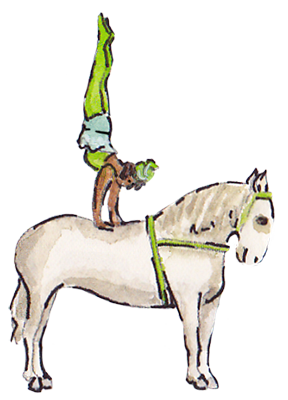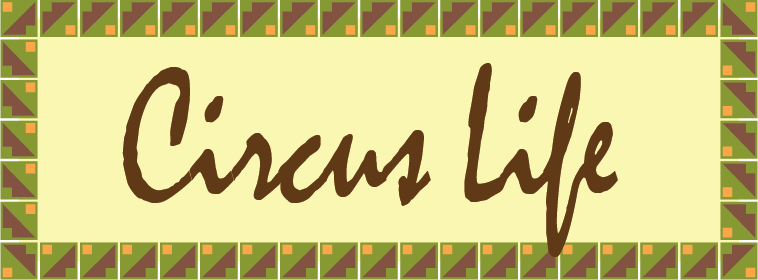 |
When I was little, my mother told me there are basically two kinds of people in the world: town people and circus people.
The kind who stay are town people, and the kind who leave are circus people.
―Cathy Day
|

|
| |
Running away to join the circus
The circus had a siren call for those who wanted to break away from their sad lives and see the world. What could be more glamorous than running away to join the circus?
Good bye cruel world, I'm off to join the circus.
My friend Ashley Simone actually did run away and join the circus!
She shared her experience with me.
|
|
 Not so much glamour for most. Most ended up doing hard work in harsh living conditions. Not so much glamour for most. Most ended up doing hard work in harsh living conditions.
Runaways were unlikely to become performers since that took years of apprenticeship. Instead they became roustabouts, candy butchers, or waiters, or they just cleaned up after animals. They had to conform to the restrictive norms of the circus community.
Workers all were second class compared to performers, but even among workers there was a hierarchy.
- Props: at Beatty-Cole they wore matching red jump suits. They took down and put up rigs, cages, etc. during the show and so were in the public eye. They ate their meals next to the performers.
- Cook tent workers, who at least ate very well.
- Roustabouts
Circus life was hard: but so was life on the farm. And joining the circus worked out for some children. Bailey ran away from child abuse and became one of the most famous men in circus history.
|
|
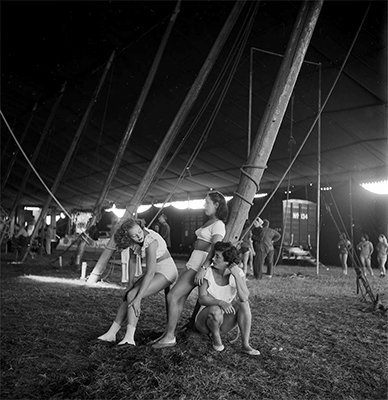 Life for performers was generally better, like long-term camping with an extended family. Life for performers was generally better, like long-term camping with an extended family.
After the parade, performers had free time on the back lot where no public could observe them. They also spent time on the lot between the two (or three) daily shows and in between their acts, but they had to be careful. A herd of galloping horses exiting the big top would practically stampede into the back lot.
The performers warmed up, practiced, ate, hung out, did laundry, mended costumes, repaired gear, tinted their hair. Making scrapbooks was a popular hobby. They played chess and card games (gambling was forbidden but...). Kids read newspapers to illiterate colleagues. |
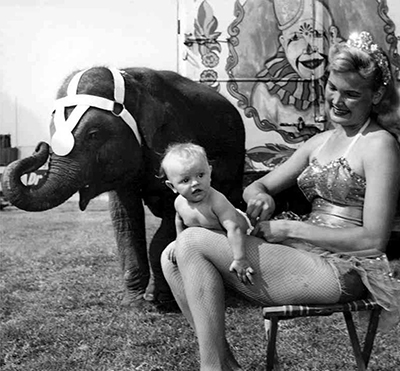 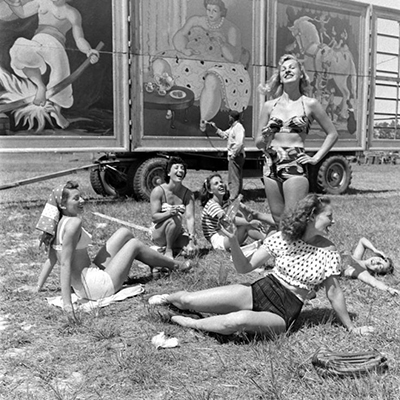 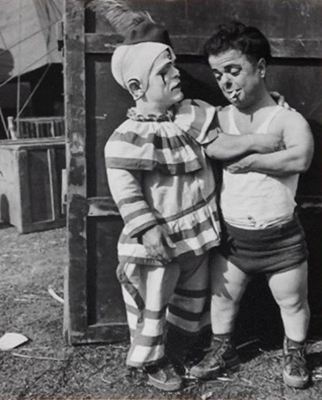 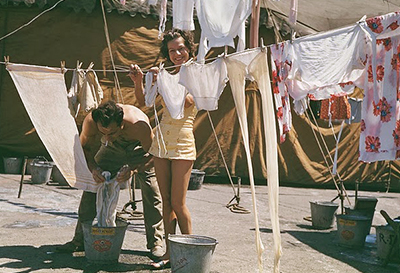 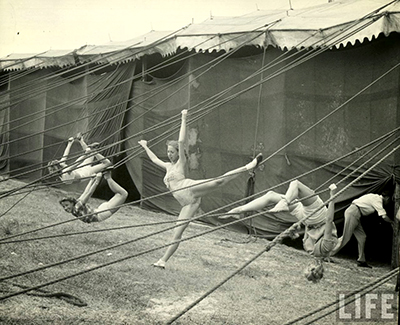  |
| |
|
Families mattered.
Children traveling with the circus began training early: that's how dynasties were built. (Child labor?!)
The children were home schooled.
.jpg) 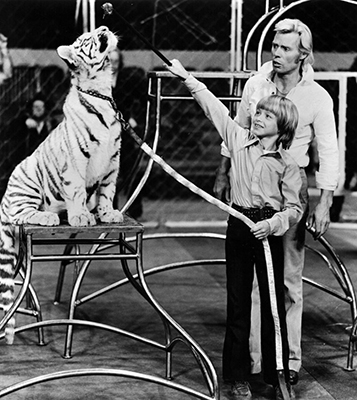 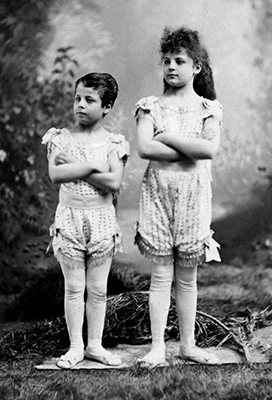 |
|
|
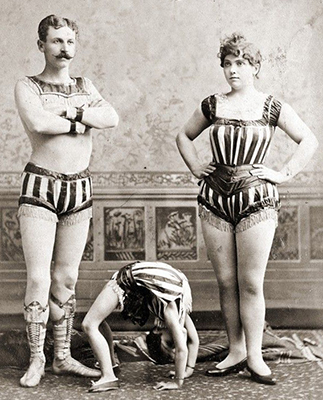 .jpg) .jpg) |
|
.jpg) But there were problems, even for performers. But there were problems, even for performers.
- There was a pretty complete lack of privacy.
- Circus lots had no running water. Each performer was allotted just two buckets of water a day, even the stars.
- Rain cancelled performances and turned the lot into a boring field of mud.
- The pit toilets can't have been pleasant.
- There were occasional flea infestations and problems with rodents. (Circus elephants, unlike elephants in the wild, really were afraid of mice, as their feet were chained at night and it was hard to avoid bites.)
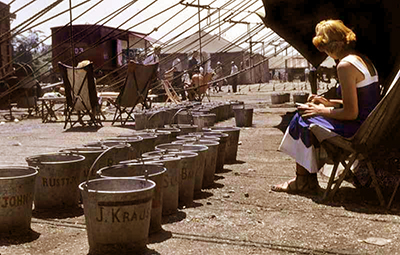
|
|
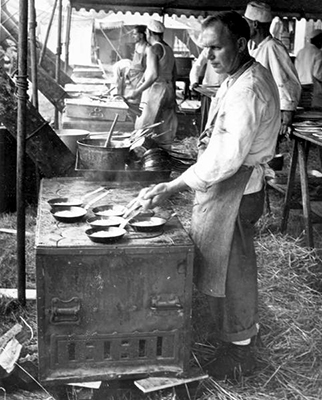 Feeding the circus on the road was an astounding accomplishment. Feeding the circus on the road was an astounding accomplishment.
Large circuses served thousands of meals daily. The cookhouse tent had to be taken down, moved, and put back up between dinner and breakfast. And the dishes had to be washed after dinner: electric dishwashers didn't come until the 1930s.
In early days, cooks spent hours over huge, hot griddles to make thousands of pancakes. They cooked tons of meat and vegetables on wood and charcoal stoves. Then with trains came travelling ovens, so bread and pies were baked. It was hot, hot work.
In 1919 Ringling served 3,500 meals a day, including 5,000 pancakes. In 1945 they served 4,500 meals a day. Cookhouse workers might peel 50 bushels of potatoes a day to feed 1,600 people. 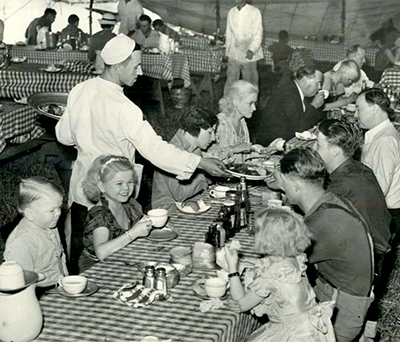 It took 12 men just to peel the potatoes. It took 12 men just to peel the potatoes.
When a meal was ready for the company, a flag was flown on the cookhouse tent. In early days performers dressed for dinner, even in the heat. As late as 1935 the brass and stars ate in a special dining car, with food prepared by a chef. Some performers were served by waiters at carefully set tables (planks on sawhorses). Performers ate on china. Workers lined up for a buffet and sat in a segregated area. They ate on tin.
The sideshow performers ate before the others because they were on first. |
|
 Social life in the circus Social life in the circus
While everyone spoke circus jargon, many different languages were native to performers, so communication could be challenging. "Matching" and "hatching" was not uncommon within the circus company. This helped prolong the European dynasty acts.
It was OK to sightsee or take a hotel room to get a bath, but Ringling and other respectable circuses forbade fraternization with the opposite sex among towners. Not that it never happened. |
|
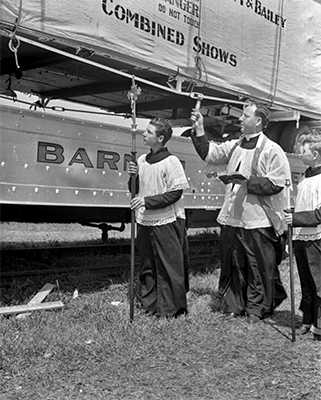 The large circus company was a movable small town. The large circus company was a movable small town.
It included:
- a blacksmith
- painters and workmen to touch up and repair wagons and gear
- a doctor and sometimes a nurse (accidents were rare but the dangers were real)
- a chaplain
Most circus people were religious. All were superstitious.
In the 1800s Sundays were not show days: rest! But in the 20th century there were no days off between March and December.
When circuses changed to trucks, performers had trailers (often supplied by themselves) but workers slept on cots in semis. |
|
Work went on in the winter quarters.
New acts were developed, new troupes were scouted, new costumes and props were created. Many circus workers had to find employment for the off-season, in theaters or vaudeville if they were lucky. Children attended regular school. |
|
|
| |
|
|
| |
|
|
| |
|
|
